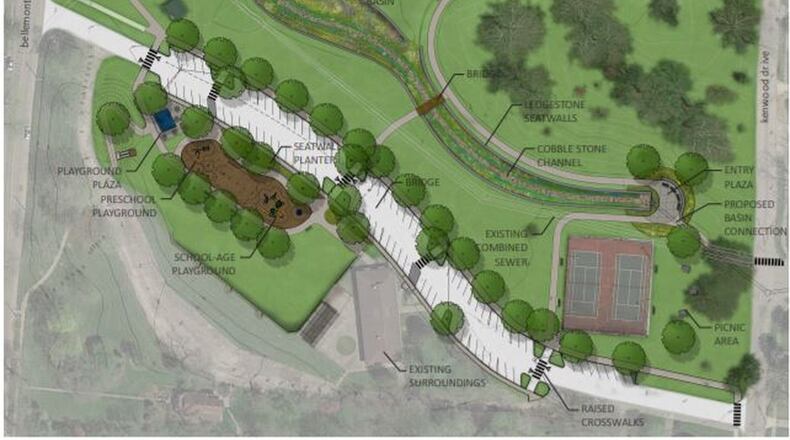The project includes constructing a storm sewer to intercept a portion of the flow from the Bulls Run stream where it enters the combined sewer system near the intersection of Sheldon Road and Santa Fe Drive.
City officials said the intercepted flow from the drainage area will be redirected to an approximately one-acre regional green infrastructure retention basin located at Sunset Park, reducing storm water loading to the combined sewer system. The new features are designed to not detract from the park’s character.
“It’s been going pretty well and there have been no major issues,” said Scott Tadych, Middletown public works and utilities director.
The park has been closed most of the spring and summer during the construction.
The project also includes storm sewer installation on Sheldon Road that will likely necessitate overall road improvements between Kenwood Drive and Santa Fe Drive, including waterline replacement, curb repairs and full-width street paving.
The one-acre green infrastructure basin will include a cobblestone channel surrounded by aesthetic plantings to manage water quality and be bounded by a ledgestone seat wall. Approximately 40 new trees will be planted throughout the park with minimal disturbance to existing mature trees, officials said.
Tadych said the retention basin is rough graded and work is expected to begin on the ledgestone seat wall. He said crews have spent the last few weeks replacing the water line on Sheldon Road between the park and Santa Fe Drive, a portion that is nearing completion.
“The bulk of the project should be completed by mid-October, weather permitting,” Tadych said. “It will take until spring 2020 to get all the grass and other plantings established and final touches completed.”
In December 2017, Middletown City Council approved the proposed consent decree with the EPA. That settlement was finalized by the federal government in the U.S. District Court in Cincinnati in early 2018.
According to the EPA, the city discharged millions of gallons of untreated sewage each year from its sewer system during and after rain events through its eight “combined sewer overflow” outfalls. Untreated sewage can contain disease-causing bacteria, viruses and parasites, as well as pollutants that can harm aquatic life.
Under the agreement, the city will construct storage basins and other improvements to its sewer system and sewage treatment plant over 25 years that will reduce the frequency and volume of its untreated sewer overflows.
The city was to pay a penalty of $55,000 and spend $200,000 on a project in the canal to protect aquatic life from contaminated sediments.
About the Author

